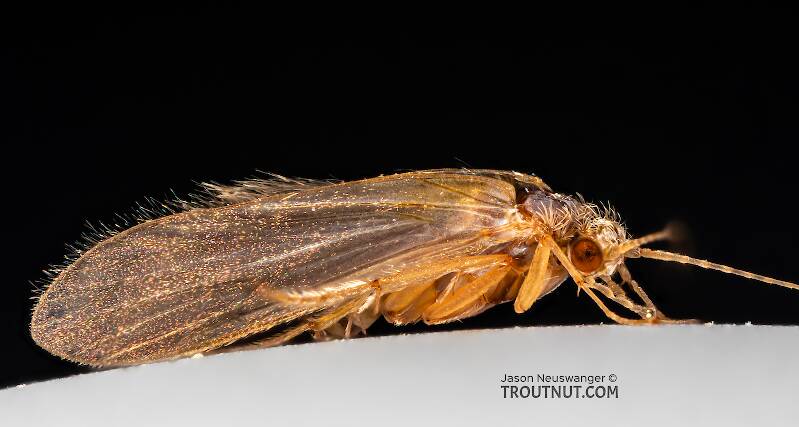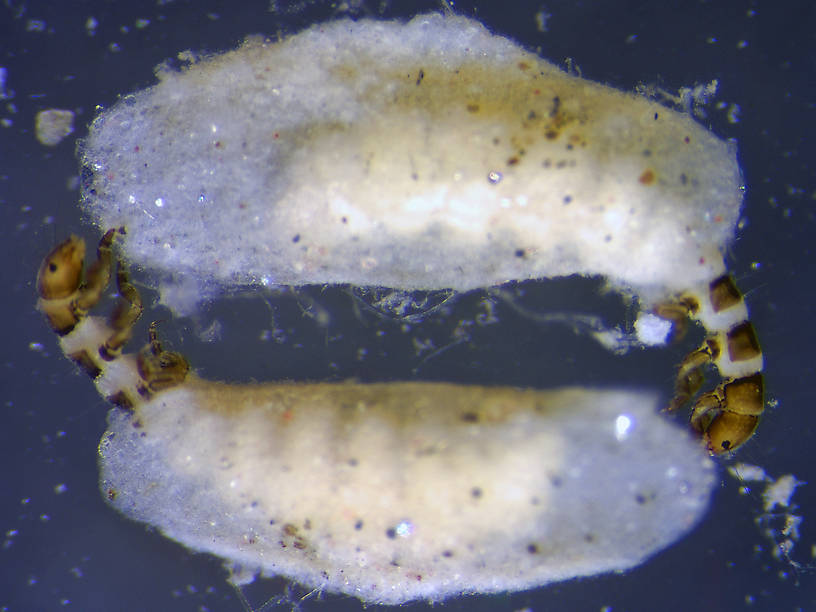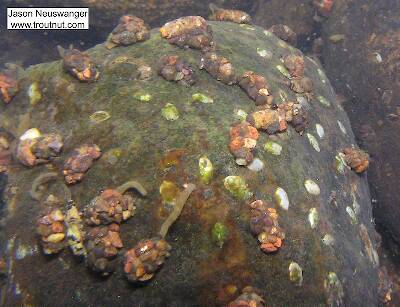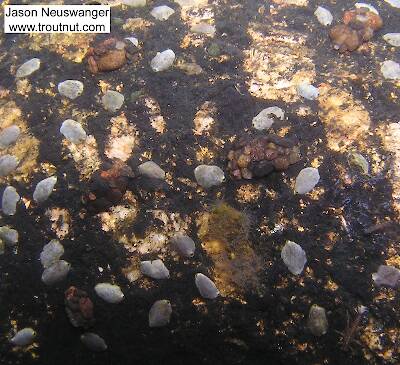
Hex Mayflies
Hexagenia limbata
The famous nocturnal Hex hatch of the Midwest (and a few other lucky locations) stirs to the surface mythically large brown trout that only touch streamers for the rest of the year.
Featured on the forum


Troutnut is a project started in 2003 by salmonid ecologist Jason "Troutnut" Neuswanger to help anglers and
fly tyers unabashedly embrace the entomological side of the sport. Learn more about Troutnut or
support the project for an enhanced experience here.
Caddisfly Family Hydroptilidae (Microcaddisflies)
Both anglers and entomologists know these diminutive flies as "Microcaddisflies." The term refers to this family specifically, not to all tiny caddisflies. Many are large enough for imitation on small hooks, but some are impossibly small, as tiny as hook size 36.
Like the Tricorythodes mayflies, Microcaddisflies can be important to trout because of their extreme abundance in certian waters.
Like the Tricorythodes mayflies, Microcaddisflies can be important to trout because of their extreme abundance in certian waters.
Family Range
Hatching behavior
Pupae emerge on the surface, where they struggle for a long time to break through.Egg-Laying behavior
Females dive to the bottom to lay their eggs.Larva & pupa biology
Diet: Plankton or algae (including filamentous)
Shelter type: Plant matter, rock, sand, or silk
Specimens of the Caddisfly Family Hydroptilidae
1 Male Adult
1 Adult
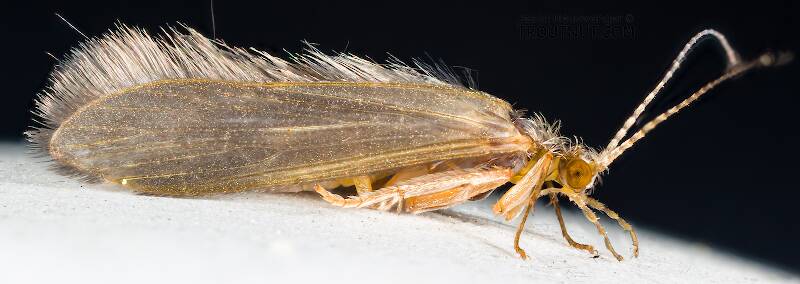
I'm tentatively classifying this one as Dibusa angata because I cannot see any ocelli in my dorsal view of the head (and because it has a single spur on each front tibia). However, sometimes they can be difficult to spot when obscured behind setae in general, so I'm not 100 % sure on this one. If there are ocelli I missed, then based on ranges and colors the genus ought to be Stactobiella.
1 Larva
2 Underwater Pictures of Hydroptilidae Caddisflies:
Discussions of Hydroptilidae
Tiny Black Caddis hatch, late fall - Nov 26 to be exact_ Spring Creek Southern MO
21 replies
Posted by Dai_sca on Dec 29, 2010
Last reply on Dec 10, 2019 by Pdcox
I had not fished Bennett Spring for many years and ended up there on Nov 26. I was not very prepared for the stream's entemology, spoke to someone at the flyshop and went with fishing a midge or two and this was very successful. But it was quite obvious that the trout were feeding on the surface or just under and it wasn't a midge. As the day progressed and late afternoon brought sunshine, a hatch of Tiny Caddis(Black) appeared. I had a size 18 but it wasn't dark enough or small enough. A gent who fished the stream regularly gave me a #24 black Elk Hair(or other hair) caddis. The fish took this fly as a dry off the surface. I am hard pressed to ID this fly aside from Protoptila. This, however, is not a marginally temp spring, the water is consistent flow a cold. The description of the Protoptila indicates that this insect is more a warm water insect. The hatch was occurring right at the spring itself. Any ideas?
Again, this was a size 24 fly, and maybe,just maybe, a 26 or 28 might have been the appropriate size for the insect as there were obvious refusals at the surface.
David (dai_sca@yahoo.com
Again, this was a size 24 fly, and maybe,just maybe, a 26 or 28 might have been the appropriate size for the insect as there were obvious refusals at the surface.
David (dai_sca@yahoo.com
Start a Discussion of Hydroptilidae
References
- Caucci, Al and Nastasi, Bob. 2004. Hatches II. The Lyons Press.
- LaFontaine, Gary. 1981. Caddisflies. The Lyons Press.
- Swisher, Doug and Carl Richards. 2000. Selective Trout. The Lyons Press.
Caddisfly Family Hydroptilidae (Microcaddisflies)
Taxonomy
Genus in Hydroptilidae
AgrayleaSalt and Pepper Microcaddisflies
0
0
Dibusa
2
19
HydroptilaVaricolored Microcaddisflies
1
1
LeucotrichiaRing Horn Microcaddisflies
0
2
OxyethiraCream and Brown Microcaddisflies
0
0
Palaeagapetus
0
0
12 genera (Alisotrichia, Ithytrichia, Mayatrichia, Metrichia, Neotrichia, Nothotrichia, Ochrotrichia, Orthotrichia, Paucicalcaria, Rioptila, Stactobiella, and Zumatrichia) aren't included.


